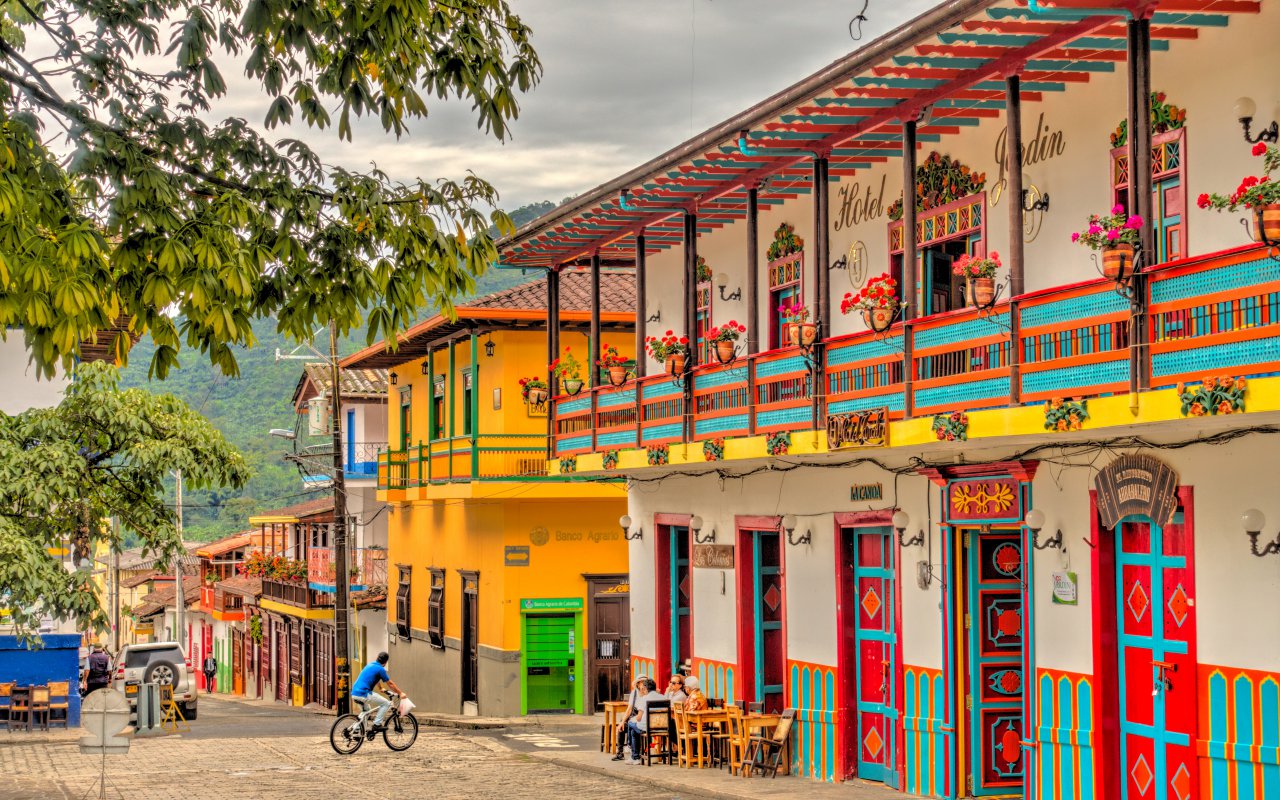Did you know that Colombia is home to one of the largest collections of gold artifacts from the pre-Columbian era? With its rich culture, vibrant traditions, and stunning landscapes, Colombia offers a unique and immersive travel experience like no other.
Imagine walking through the colorful streets of Cartagena, where colonial architecture meets modern structures, or witnessing the Palm Sunday Procession in Popayan, filled with pomp and splendor. Colombia’s cultural heritage is alive and thriving, inviting travelers to delve into its fascinating history and traditions.
Whether it’s exploring archaeological sites like Guatavita Lake, touring the Museum of Gold in Bogota, or dancing to the rhythm of salsa in vibrant festivals, Colombia never fails to captivate visitors with its cultural richness.
Get ready to embark on an unforgettable journey through Colombia’s culture, heritage, and travel tips. Discover the hidden gems of this diverse country and immerse yourself in its traditions, history, and warm hospitality.
Key Takeaways:
- Colombia offers a unique travel experience rich in culture, heritage, and stunning landscapes.
- The country boasts a blend of European, African, and indigenous roots, reflected in its traditions and customs.
- Colombian celebrations and festivals are vibrant and lively, offering visitors a chance to immerse themselves in the joyous spirit of the culture.
- Explore Colombia’s heritage sites to gain a deeper understanding of its cultural significance.
- By embracing the local culture and traditions, travelers can truly experience the heart and soul of Colombia.
Colombian Traditions and Cultural Heritage
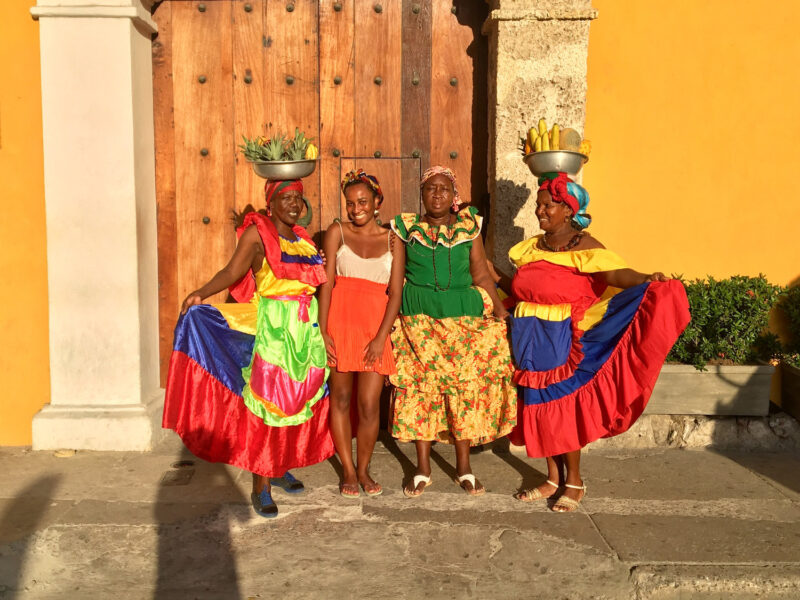
Colombia is a country that deeply values its traditions and cultural heritage. Throughout its history, various influences have shaped the diverse tapestry of Colombian culture, creating a unique blend of indigenous, European, African, and mestizo traditions.
Ancient Indigenous Craftsmanship and the Legend of El Dorado
The ancient indigenous tribes of Colombia, such as the Muisca and the Tayrona, were renowned for their exquisite gold craftsmanship. Their intricate gold pieces, featuring elaborate designs and meticulous craftsmanship, captivated the Spanish conquistadors, sparking the legendary tale of El Dorado, a city adorned in gold.
The Influence of Spanish Colonialism and Catholicism
During the Spanish colonial period, Catholicism was introduced to Colombia and became a dominant religion that continues to shape Colombian culture today.
Cathedrals, churches, and religious festivals are an integral part of the cultural landscape, blending Spanish Catholic traditions with indigenous elements.
San Basilio de Palenque ─ Preserving African Heritage
View this post on Instagram
Cartagena, once the largest slave port in Latin America, is home to the iconic settlement of San Basilio de Palenque. This historic community was founded by escaped slaves who preserved their African heritage and way of life, including their unique language, Palenquero.
San Basilio de Palenque serves as a testament to the resilience and strength of the African diaspora and their contribution to Colombian culture.
Preserved Colonial Architecture and Modern Coexistence
Traveling through Colombia, visitors will encounter beautifully preserved colonial architecture, with cobblestone streets, colorful facades, and ornate balconies. Cities like Cartagena, Bogota, and Villa de Leyva showcase colonial charm, while new modern structures coexist harmoniously, blending the old with the new.
Traditional Colombian Celebrations and Festivals
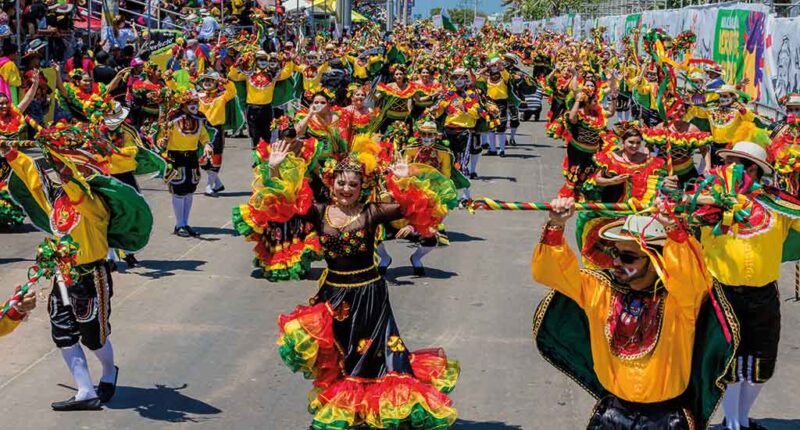
Colombia is known for its vibrant and lively celebrations and festivals throughout the year. One of the most famous is the Palm Sunday Procession in Popayan, where statues of Christ the Savior are paraded through the streets with great pomp and splendor.
This traditional Colombian celebration attracts both locals and tourists who gather to witness this spectacular religious event. The procession is a solemn and visually stunning display of faith and devotion, reflecting the deeply rooted religious traditions in Colombian culture.
Another iconic festival in Colombia is the Barranquilla Carnival, often referred to as “Colombia’s biggest party.” This colorful celebration takes place before Lent and showcases traditional dances, music, and elaborate costumes.
It is a joyful and energetic extravaganza that brings together people from all walks of life to indulge in the spirit of unity, expression, and cultural pride.
View this post on Instagram
“The Barranquilla Carnival is a vibrant and dynamic celebration that captivates the hearts of both Colombians and international visitors. It is a testament to the rich cultural heritage of the country, with its diverse music genres, such as cumbia and vallenato, and intricate dance performances.”
Music and dance are integral parts of Colombian celebrations, and salsa reigns supreme as a prominent cultural expression. The country’s vibrant salsa scene attracts enthusiasts from across the globe, who come to Colombia to learn and experience the exhilarating rhythms firsthand.
From small local fiestas to large-scale events, visitors can immerse themselves in the joyous spirit of Colombian traditions and revel in the contagious energy of dance and music.
Notable Colombian Celebrations
- Feria de Cali ─ A weeklong salsa festival held in Cali, known as the “World’s Salsa Capital,” where salsa lovers gather to dance, compete, and celebrate Latin American music and culture.
- Festival de Las Colonias ─ An annual celebration in the town of San Juan de Pasto, featuring vibrant parades, traditional music, and richly decorated floats that pay homage to Colombia’s diverse cultural heritage.
- Festival Iberoamericano de Teatro ─ The largest theater festival in the world, bringing together international theater companies for a month-long celebration of performing arts in Bogota.
In conclusion, the traditional Colombian celebrations and festivals offer a unique and immersive experience into the country’s rich cultural heritage. Whether it’s witnessing the grandeur of the Palm Sunday Procession or dancing to the infectious rhythms of salsa, these celebrations provide a glimpse into the vibrant soul of Colombia.
By participating in these joyful events, visitors can forge meaningful connections with local traditions and create lasting memories of their Colombian adventure.
Heritage Sites in Colombia
Colombia is a country steeped in history and cultural significance, with numerous heritage sites that showcase its rich past and diverse heritage. Exploring these sites allows visitors to delve into Colombia’s captivating stories and gain a deeper understanding of its culture.
From archaeological sites to well-preserved colonial towns, here are some of the must-visit heritage sites in Colombia:
Guatavita Lake
One of the most intriguing archaeological sites in Colombia is Guatavita Lake. Located near Bogota, this beautiful lake was once a sacred site for the indigenous Muisca people. Legend has it that they performed elaborate rituals and made gold offerings to their gods in the lake.
Visitors can explore the surrounding area and learn about the fascinating myths and rituals that took place here.
Museum of Gold, Bogota
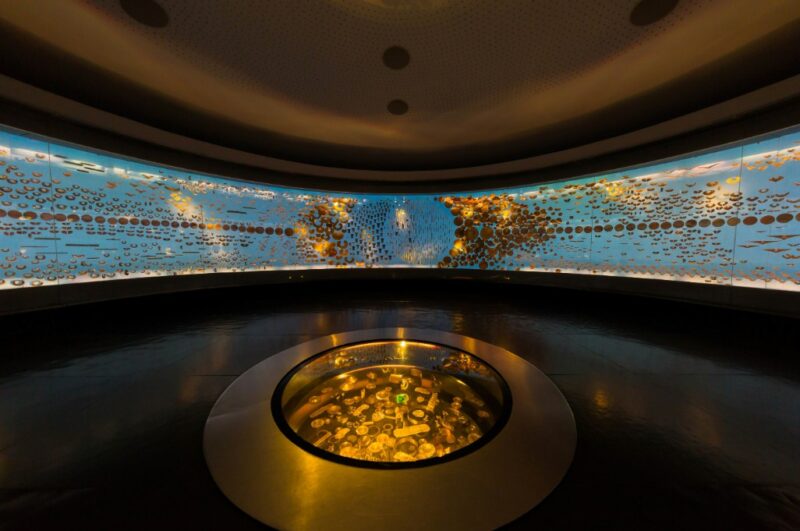
For a comprehensive insight into Colombia’s pre-Columbian era, a visit to the Museum of Gold in Bogota is a must. This renowned museum houses the largest collection of gold artifacts in the world, displaying intricate gold craftsmanship and artifacts from ancient indigenous cultures.
Visitors can marvel at the craftsmanship of ancient treasures and learn about the cultures and rituals associated with gold.
Cartagena
Nestled on Colombia’s Caribbean coast, Cartagena is a UNESCO World Heritage Site and a treasure trove of colonial architecture and history. The city’s well-preserved plazas, city walls, forts, and museums offer a glimpse into Colombia’s colonial past.
Visitors can stroll through the charming streets of the historic center, visit the iconic Castillo San Felipe de Barajas, and immerse themselves in the vibrant culture and history of this coastal gem.
The Highlands of Bogota
Head to the highlands of Bogota to experience the heart of Colombia’s history and heritage. The capital city itself is home to numerous museums, such as the National Museum and the Botero Museum, where visitors can learn about the country’s art and history.
Explore the colonial neighborhood of La Candelaria, with its colorful streets and charming architecture. Don’t miss the chance to visit the iconic Monserrate Hill, offering panoramic views of the city and a glimpse into Colombia’s religious traditions.
Colombia’s heritage sites offer a captivating journey through the country’s past and provide a deeper appreciation for its culture and traditions.
Whether exploring ancient archaeological sites or strolling through colonial towns, visitors are sure to be enchanted by the depth and diversity of Colombia’s heritage.
Conclusion
Colombia offers a wealth of cultural experiences and opportunities for travelers to immerse themselves in its vibrant culture and heritage. To make the most of your trip to Colombia, it is advisable to learn a bit of Spanish, as it is the official language of the country.
When visiting cities like Bogota, be sure to explore the historic neighborhoods, such as La Candelaria, with its cobblestone streets and vibrant street art. Don’t miss the chance to witness traditional celebrations and festivals, where you can experience the lively spirit of Colombian traditions.
Finally, take the time to visit the country’s heritage sites, such as the Museum of Gold and Cartagena’s historic center, to gain a deeper understanding of Colombia’s cultural heritage. With careful planning and an open mind, you can truly explore the rich culture and heritage of Colombia while enjoying its stunning landscapes and warm hospitality.
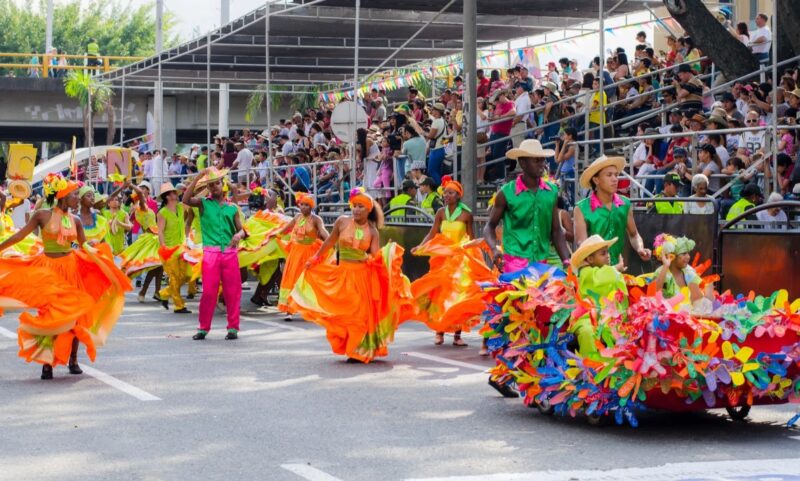
FAQ
What are some traditional Colombian celebrations and festivals?
Some traditional Colombian celebrations and festivals include the Palm Sunday Procession in Popayan and the Barranquilla Carnival.
What can visitors expect to see at heritage sites in Colombia?
Visitors can expect to see archaeological sites, colonial towns, and museums showcasing the rich history and cultural significance of Colombia.
What should I do to make the most of my trip to Colombia?
To make the most of your trip to Colombia, it is advisable to learn some Spanish, explore historic neighborhoods, and witness traditional celebrations and festivals.
